Creative Thanksgiving Marketing Ideas for Canadian Sellers 2024
Thanksgiving is a time for gratitude, family, and delicious food. However, it is also a prime opportunity to boost sales and connect with customers. Here are creative Thanksgiving marketing ideas to help you make the most of this holiday season.
Key Takeaways
- Boost sales with limited-time deals and fun contests on social media to engage customers and create excitement.
- Partner with local businesses and offer in-store discounts to attract more customers and build connections.
- Ensure fast and reliable shipping for your Thanksgiving orders to keep customers happy and on time.
10 Marketing Ideas for Thanksgiving
Thanksgiving kicks off the holiday shopping season, especially with events like Black Friday and Cyber Monday. Many consumers are looking for deals, making it a perfect time for sellers to boost sales through promotions and discounts.
Additionally, it’s a chance to attract buyers across the borders. Thus, taking advantage of the Thanksgiving holiday season can significantly increase revenue and brand visibility ahead of the busy holiday period.
Here are 10 creative marketing ideas to help you make the most of the Thanksgiving holiday:
1. Leverage the Power of Social Media Channels

Social media for your business during Thanksgiving is a great way to reach more people. Many shoppers look for holiday deals and ideas online. Thus, this is your chance to showcase your products.
There are many ways to take advantage of the power of social media.
- You can post Thanksgiving-themed content, like recipes or crafts. To make it more personal, you can also post your own Thanksgiving dinner.
- Engage your audience by running a giveaway contest. As we all know, Thanksgiving is a celebration where great food takes center stage. So, let customers share their favourite memories or recipes for a prize.
- Create a festive lookbook featuring your products, such as outfits or home decor.
- Use your social media channels to show behind-the-scenes moments of your Thanksgiving prep. Ask them how their preparations are going and use polls or questions to facilitate interactions.
It also allows you to interact with followers in real-time, boosting engagement and sales. Thanksgiving is a busy shopping time, and social media helps put your business in front of eager buyers.
2. Offer Limited-Time Deals and Promotions
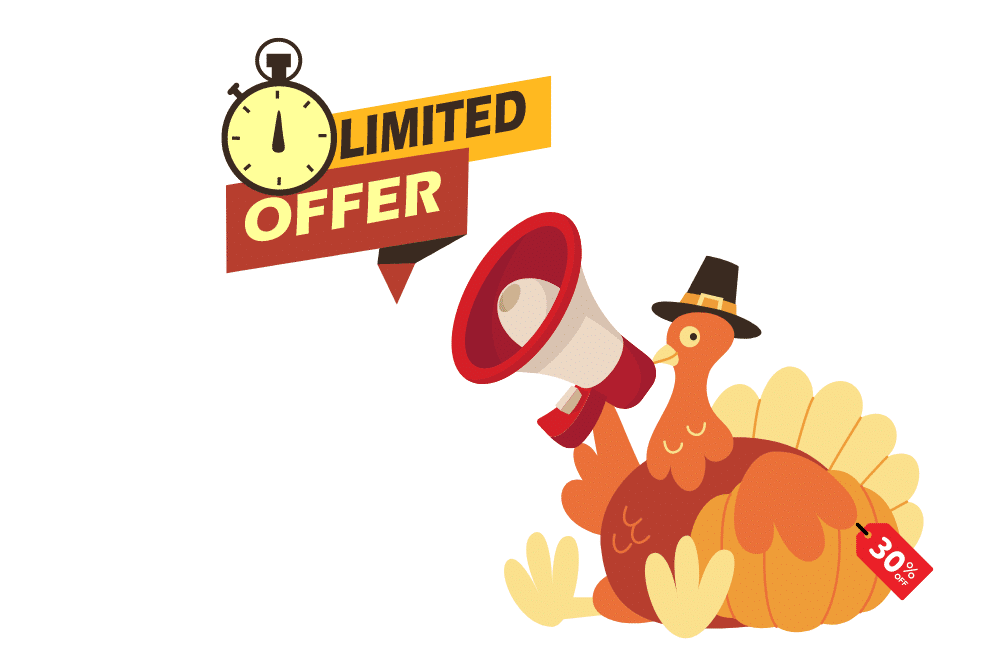
Offering limited-time deals and promotions is a smart way to boost holiday sales. A time-limited offer creates a sense of urgency, encouraging customers to buy before the deal ends. It also helps increase traffic to your store and can lead to more purchases.
These promotions can make your brand stand out. It’s the perfect time to attract new customers and reward loyal ones. By offering these deals, you can drive more business during one of the busiest shopping times of the year.
3. Email Marketing Campaigns
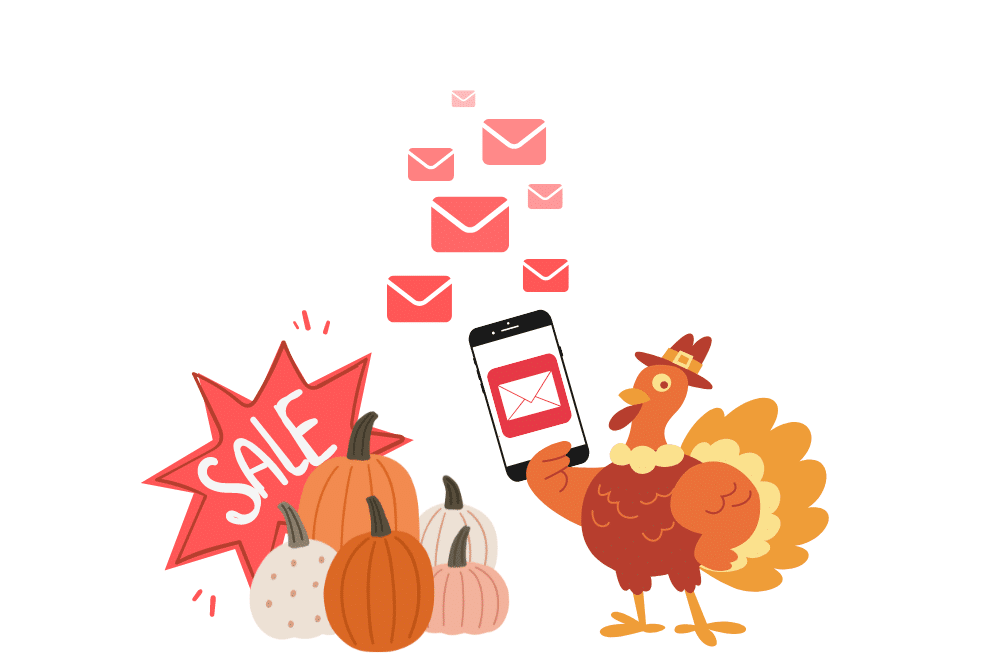
A Thanksgiving email marketing campaign is a powerful way to connect with your customers. People are already looking for hot deals, so a well-time email can grab their attention.
You can send personalized offers, promotions, or discounts directly to their inbox. This is also a great opportunity to showcase your Thanksgiving-themed products. It’s an easy process to shop at your store.
Sending festive emails during the Thanksgiving holiday weekend will help you:
- Remind customers of your brand
- Build relationships with more customers
- Drive more sales
Plus, it’s cost-effective and allows you to reach a large audience quickly.
4. Holiday Season In-Store Promotions
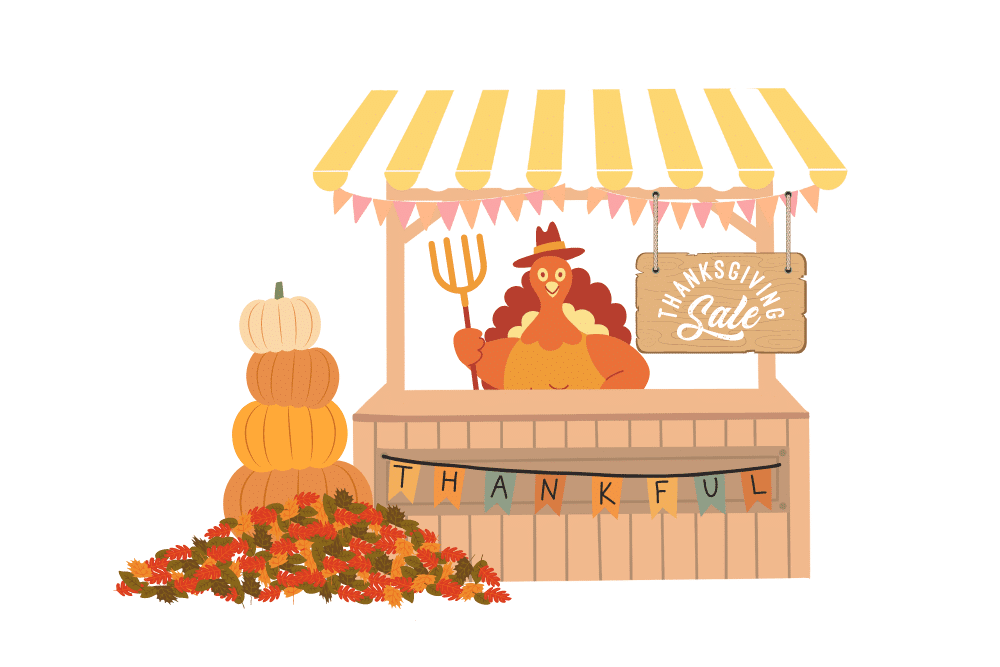
If you have a physical store, this next Thanksgiving marketing idea is worth considering. In-store promotions are great ways to bring more customers into your business. Many people start holiday shopping during this time, and special offers can encourage them to visit your store.
Promotions create excitement and give loyal customers a reason to choose your business over others. Some of the Thanksgiving promotions you can offer are:
- Give a Thanksgiving-related gift with purchases over a certain amount.
- Create packages of related items at a lower price when bought together.
- Provide a percentage holiday discount on specific products or the entire store.
In-store promotions allow you to connect with customers face-to-face, building loyalty and providing a personal shopping experience. Plus, they can help clear out inventory before the new year, making room for fresh stock while boosting your holiday sales.
5. Local Partnerships

Local partnerships will benefit not only your business but also the community. By teaming up, you can create joint promotions or events that attract customers to both organizations. This allows you to reach a wider audience while building relationships with nearby groups.
For example, you could host a small Thanksgiving event together. You could sell products, and a percentage of profits will proceed to the organization you support. As a result, this partnership leads to:
- Creating a sense of community
- Increasing a brand visibility
- Giving shoppers more reasons to choose local businesses
It’s a win-win situation that can boost sales and strengthen connections.
6. Customer Appreciation

Customer appreciation posts show gratitude and build a stronger connection with your audience. By thanking customers or sharing their stories, you make them feel valued and appreciated.
This can increase customer loyalty, as people enjoy supporting businesses that recognize them. It also adds a personal touch to your brand, making it more relatable and trustworthy.
After all, Thanksgiving is all about giving thanks, so it’s the perfect time to celebrate your customers. These posts can do a lot of things for your business, including:
- Boost engagement
- Encourage positive feedback
- Attract new customers who see how much you value your community
7. Content Marketing Ideas
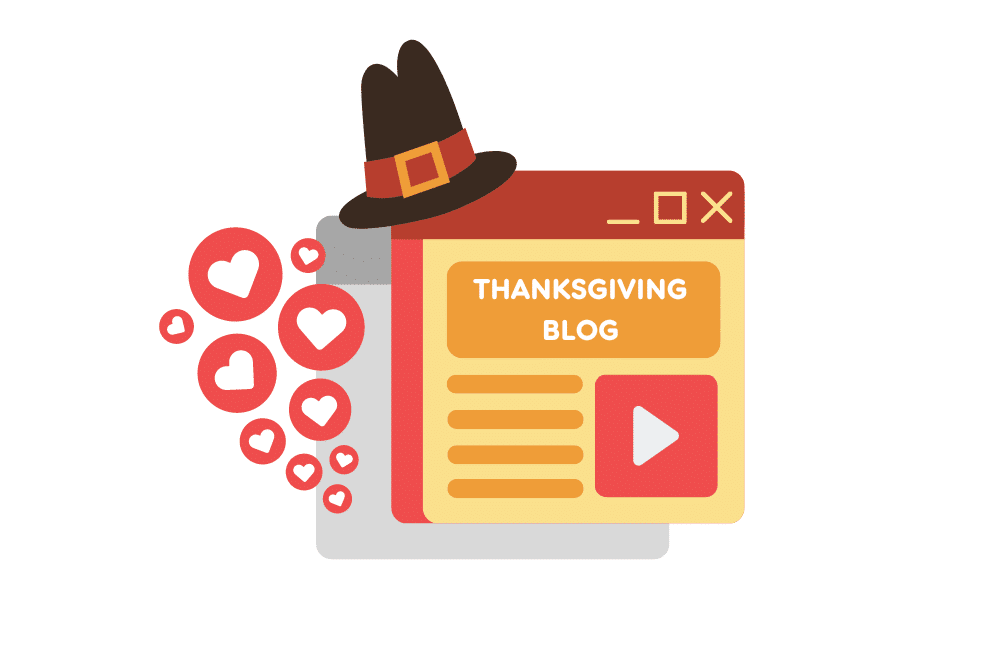
Adding content marketing ideas can help you engage with your audience and promote your business. You can create helpful festive content related to your products or services, like gift guides.
This kind of content keeps your business on customers’ minds while offering them something valuable and exciting. It also helps you connect with people emotionally during the holiday season.
Here are some Thanksgiving marketing strategies you can include in your Thanksgiving posts:
- Offer ideas on how to decorate homes, using your products if possible.
- Highlight customer testimonials or stories about how they use your products during Thanksgiving.
- Show behind-the-scenes content of your Thanksgiving preparations or how your team celebrates.
These ideas help engage your audience and boost your brand visibility during Thanksgiving. Sharing fun and helpful content attracts potential customers to your website or social media pages, increases engagement, and encourages sales.
8. Social Media Contests and Challenges

A Thanksgiving contest is an excellent way to lift that holiday mood. Running social media contests and challenges is a fun way to engage your audience and widen your customer base. People love participating in contests, especially when they can win prizes or discounts.
It creates excitement around your brand and encourages followers to share your posts, helping you reach new people. These activities increase interaction with your brand, leading to higher sales during the holiday season.
Here are some fun challenges you can share with your target audience:
- Have participants share what they are most thankful for this year with a hashtag related to your brand.
- If relevant, encourage users to post photos of their festive table setups featuring your products.
- Invite followers to create and share DIY decor ideas for Thanksgiving.
- Ask participants to share their best Thanksgiving outfits to win a gift card or discount.
9. Thanksgiving-Themed Gift Ideas

Gift items help your business attract more customers during the holiday. People enjoy buying seasonal items for their homes or as gifts. These special products make your store feel more festive and fun, making shoppers excited to buy.
These packages also give customers unique options that match the holiday theme. By selling Thanksgiving-related items, you can help customers find perfect items for their celebrations while increasing sales.
10. Thanksgiving-Themed Pop-Up Shop
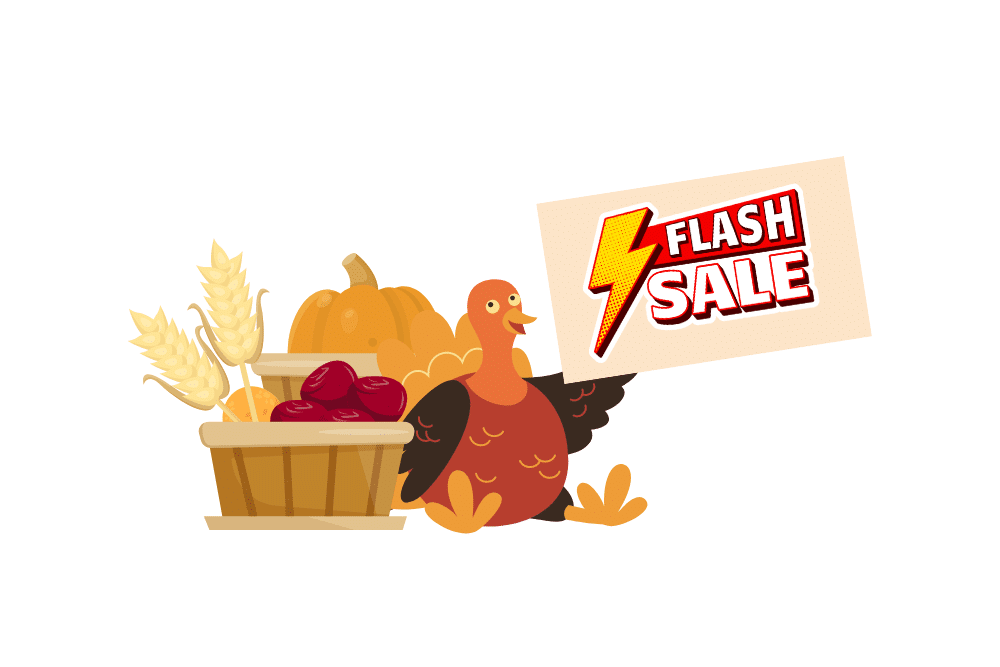
Pop-up shops are popular because they offer a limited-time, exciting shopping experience. It helps you showcase special holiday products or gifts, encouraging impulse buying.
Customers enjoy discovering unique products, seasonal themes, and exclusive deals. With pop-up shops, you create buzz, attract new customers, and boost sales quickly. Plus, their temporary nature adds urgency, making shoppers more eager to visit and buy.
It’s a fun way to boost sales and increase brand visibility during Thanksgiving.
Improve Your Thanksgiving Marketing Campaign by Shipping with Stallion
Do you have a shipping partner to deliver your Thanksgiving orders? If you don’t have one yet, why not consider Stallion?
We ensure fast, reliable, and affordable shipping, helping you deliver orders on time during the busy holiday season. -With a seamless shipping process and excellent customer support, we make it easy to fulfill your Thanksgiving promotions and keep your customers happy.
Whether you’re shipping locally or internationally, our efficient service allows you to focus on growing your business while they handle the logistics.
Final Thoughts
Incorporating smart marketing strategies during Thanksgiving can significantly boost your sales and brand visibility. Whether through promotions, social media contests, or themed products, these tactics create excitement and engagement.
With Stallion’s reliable shipping, you can ensure timely deliveries, enhance customer satisfaction, and make your Thanksgiving campaign a complete success.
Aman looks after the content marketing department at Stallion Express. He is passionate about helping businesses grow by providing informative and up-to-date trends in the eCommerce industry. Outside the office, you can find him on the soccer field cheering on Real Madrid.





















































